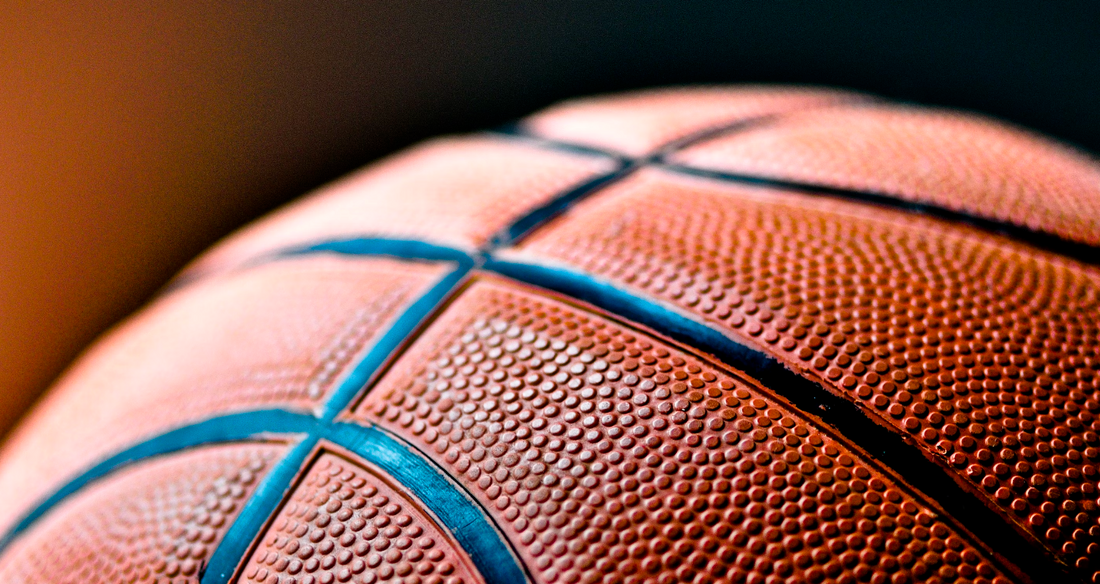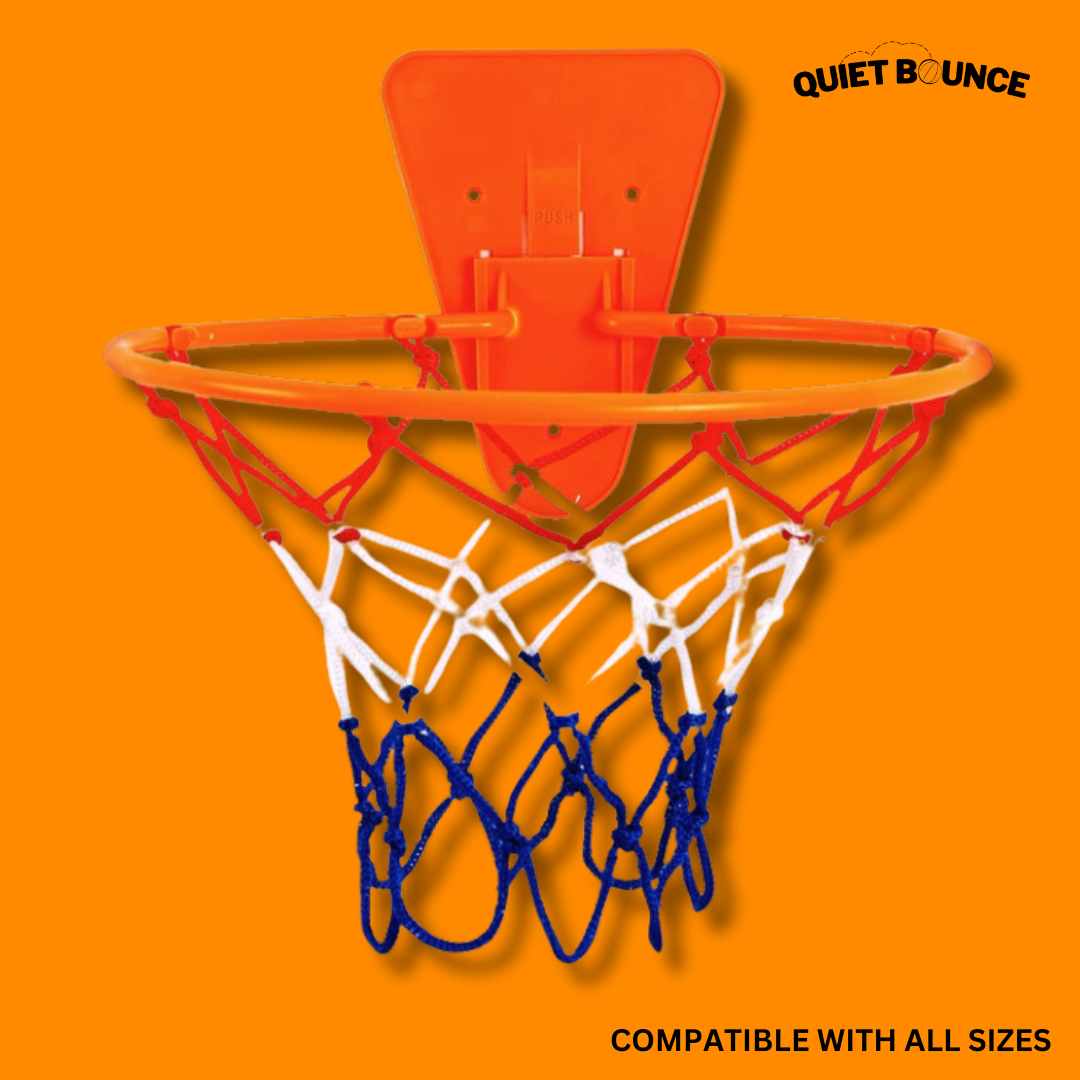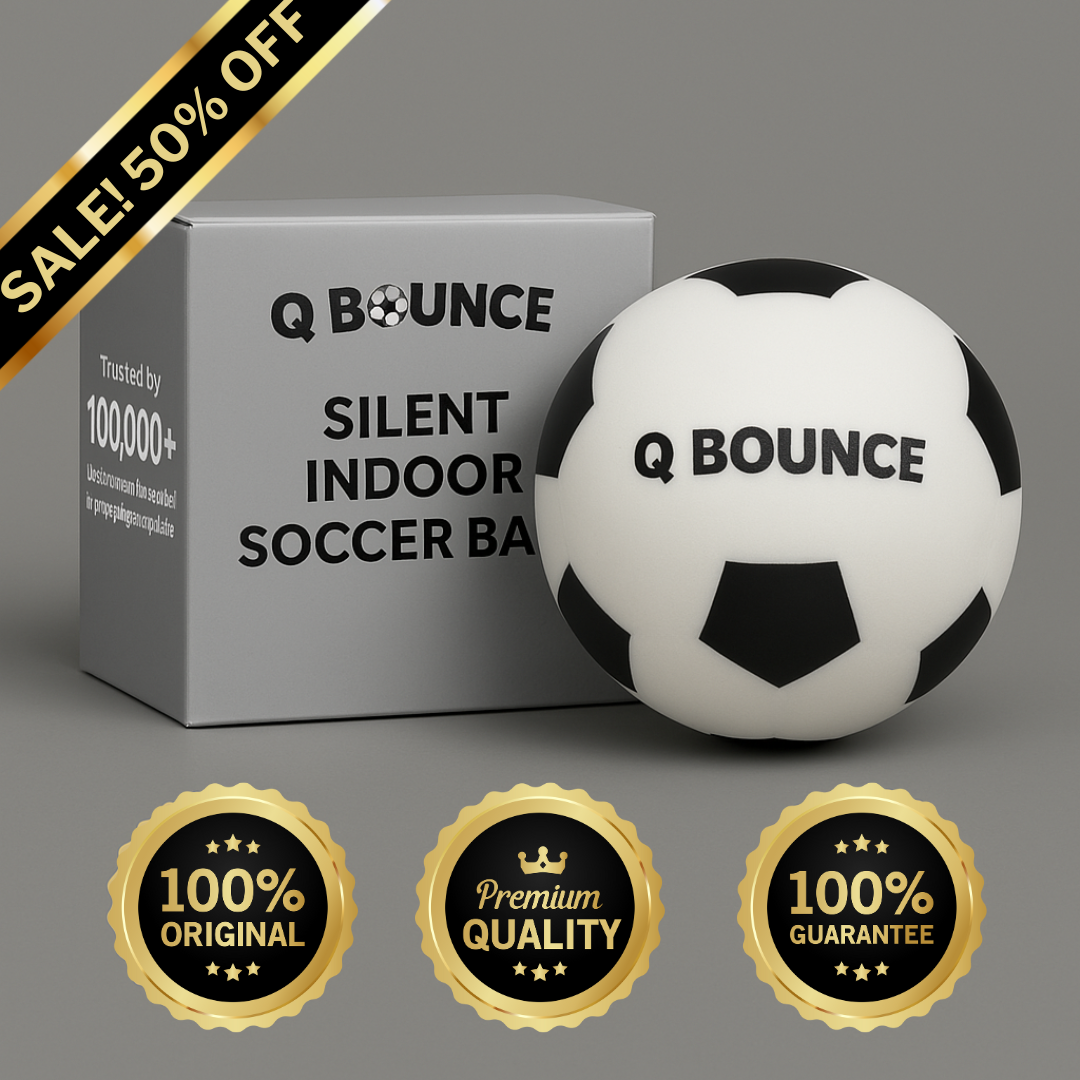
How to Get Better at Basketball Without a Hoop
Share
You won’t always have access to a basketball at home. Whether you’re at home, recovering from an injury, or traveling on vacation, those aren’t any excuses to skip out on practice. This comprehensive guide, featuring a quiet basketball that can be used anywhere, will help you get better at basketball, even without a hoop. We’ll cover fundamental skills like ball handling and passing, physical fitness, conditioning, and even watching film to boost basketball IQ. Let’s start with the basics.
Basic Basketball Skills
There are skills that are essential to basketball like dribbling, shooting, rebounding, and passing, plus a dozen others. If you’re great at these, the rest of your game will fall into place. Let’s start with the simplest one to practice without a hoop.
Building Ball Handling Skills without a Hoop
Ball handling is a necessary element of basketball, no matter your position. It helps you move the ball up the floor, create shots, set up plays, and drive to the basket. Even without a hoop, there are numerous exercises and drills that you can do at home to improve your ball handling:
-
Dribbling drills: Practice stationary dribbling, alternating between hands, and moves such as crossovers, between the legs, and behind the back. Focus on maintaining control and developing a strong dribbling rhythm, even from the comfort of your own home.
-
Cone drills: Set up cones or another set of suitable markers in a straight line or zigzag pattern. Dribble around the cones, focusing on quick changes of direction, speed, and keeping the ball low to the ground.
-
Tennis ball drills: Tennis balls will help improve hand-eye coordination and enhance your ability to control the basketball. Practice dribbling with one hand while simultaneously catching and tossing a tennis ball with the other.
- Two-ball dribbling: Challenge yourself by dribbling two basketballs simultaneously. This drill improves coordination and strengthens your dribbling skills with both hands, though you’ll never use it in a game. But trust us, all the pros practice this drill.
Passing Techniques in Tight Spaces
Passing opens up opportunities for your teammates to score & help you win games. And speaking from experience, coaches value players who distribute the ball and orchestrate plays. Here are a few drills you can practice to hone your skills:
-
Wall passing drills: Find a suitable wall and practice various passing techniques, such as chest passes, bounce passes, and overhead passes. Focus on accuracy, speed, and proper technique.
-
Target passing: Set up targets on a wall or use small objects such as cones or bottles. Practice hitting these targets with your passes, aiming for both accuracy and consistency.
-
Passing against resistance: Use resistance bands or a partner to simulate defensive pressure while passing.
-
Passing drills with a chair or dummy defender: Set up a chair or use a dummy defender to simulate a defensive player. Practice making accurate passes around the chair or dummy, mimicking game situations where you need to pass around defenders.
Physical Fitness and Conditioning
Physical fitness and conditioning are necessary to make it through long practices, full-court presses, and overtime. And with little to no equipment, you can practice these at home.
Importance of General Physical Fitness
Basketball is a fast-paced sport that requires players to have good cardiovascular endurance and sprinting ability alike.
-
Endurance training: Running, cycling, and swimming help improve your overall endurance. Engage in interval training, which mirrors the intensity of basketball games by alternating between high-intensity bursts and periods of active recovery.
-
Strength training: Focus on exercises that target the major muscle groups, including squats, lunges, push-ups, pull-ups, and core exercises like planks and Russian twists. Incorporate both bodyweight exercises and weightlifting to develop strength.
- Flexibility and mobility: Incorporate stretching exercises for major muscle groups, such as hamstrings, quadriceps, hips, and shoulders. Consider activities like yoga or Pilates, which promote flexibility and improve body control.
Tailored Conditioning Exercises for Basketball Players
-
Plyometric exercises: Plyometrics are explosive movements that improve power and quickness. Incorporate exercises like box jumps, lateral jumps, and depth jumps to enhance your vertical leap, lateral movement, and overall explosiveness.
-
Agility ladder drills: Set up an agility ladder or use tape on the ground to create ladder-like patterns. Perform various drills, such as quick feet, lateral movements, and crossover steps.
- Interval training: Simulate the high-intensity bursts of basketball games by incorporating interval training into your conditioning routine. Perform exercises like sprints, burpees, or jump rope for short, intense periods, followed by active recovery periods.
Remember to listen to your body and gradually increase the intensity and duration of your workouts. Incorporate rest days to allow your body to recover and prevent overtraining. When you get back in the gym in a few weeks, you’ll shock your teammates & coaches with your speed & power.
Improving Your Basketball IQ
You can’t hold a ball in your hands all the time. Plus, you need to watch the greats to play like the greats.
Studying Professional Games and Players by Watching Film
Watch professional basketball games, focusing on strategies, player movements, and decision-making in various situations. Analyze your favorite players who play your position, observing their techniques, positioning, and off-ball movements. Note their strengths and integrate similar aspects into your game. Study professional team plays, examining timing, positioning, and execution, to understand how players create scoring opportunities and exploit defenses. This analysis will enhance your understanding of offensive strategies and on-court decision-making.
Learning Plays and Tactics through Visualization
It may sound strange, but visualizing yourself executing basketball plays and tactics will make you a better player. Regularly doing so improves your decision-making and reaction time in real games. Study common basketball plays and familiarize yourself with your team's playbook, understanding roles and responsibilities for each play. Visualize executing these plays, recognizing options and reads in different scenarios. Engage in discussions with coaches, teammates, or experienced players for insights on strategies, enhancing your understanding of plays, tactics, and game situations.
Setting Goals and Tracking Progress
Setting goals and tracking your progress will help you reach your goals sooner, without losing sight of your north star. Here’s how to do it. .
Setting Goals
Establish long-term basketball goals that reflect your aspirations, like making the varsity team or working towards a college scholarship. These goals provide direction and motivation, and help you stay on the path without distractions. Break these into smaller, achievable short-term goals that are specific, measurable, attainable, relevant, and time-bound (SMART). This approach keeps you focused and gives a sense of progress.
Tracking Progress
Maintain a performance journal to record training, practices, and games, noting areas of improvement and strengths. Track relevant statistics like shooting percentages and assists for objective feedback. Record and review your practices and games, analyzing gameplay and techniques for improvement. Seek regular feedback from coaches and teammates, listening to constructive criticism and implementing changes. Conduct self-assessments to evaluate progress, tracking improvements and identifying areas for further attention. Adjust goals and training as needed, creating a roadmap for improvement and accountability in your basketball development. Remember, consistent effort leads to skill elevation and reaching new heights in the sport.
Improving your basketball skills is possible even without a hoop. Plus, when you finally get back on the court, you’ll be an even better player. Practice every skill that you can: dribbling, passing, jumping, sprinting, and even shooting. Set goals with a number of certain sets & repetitions so that you can measure your progression over time. And whether you’re at home dribbling with a Quiet Bounce silent basketball or outdoors with a leather ball, these tips and techniques will help you become a better basketball player, preparing you for the moment you step back onto the hardwood.




